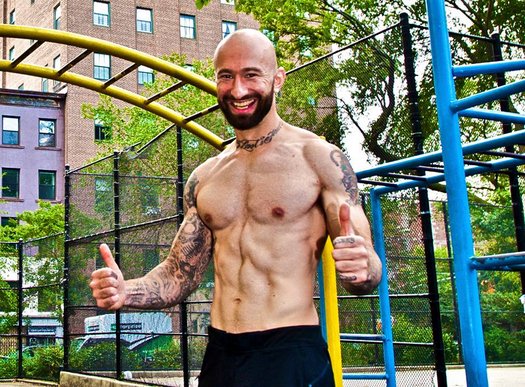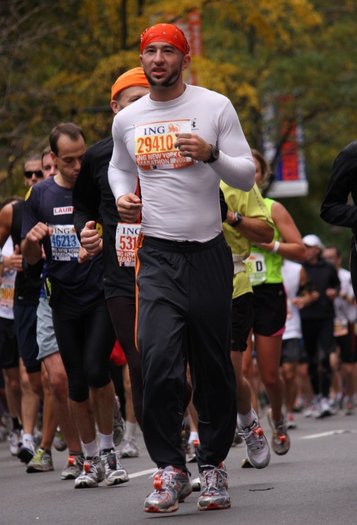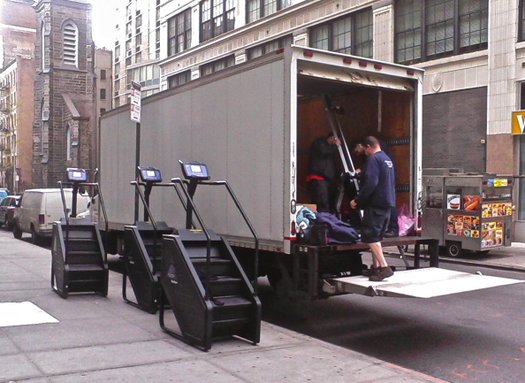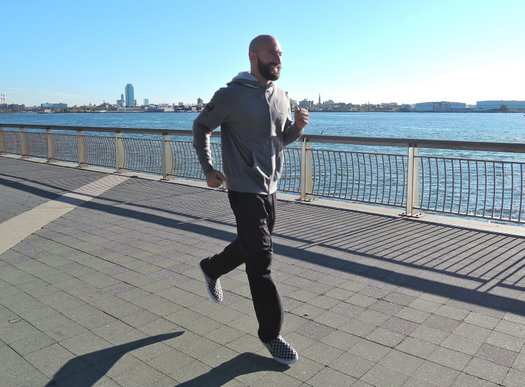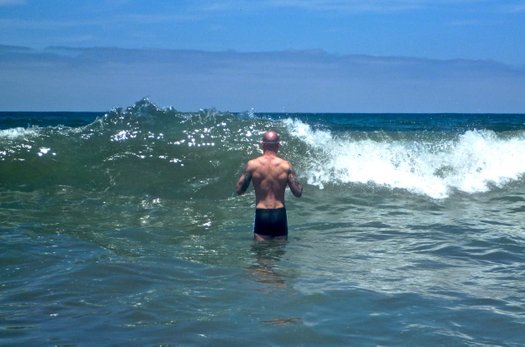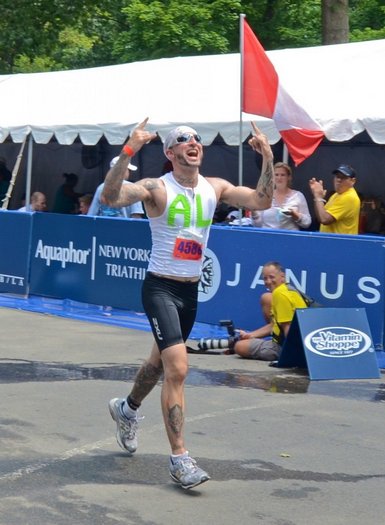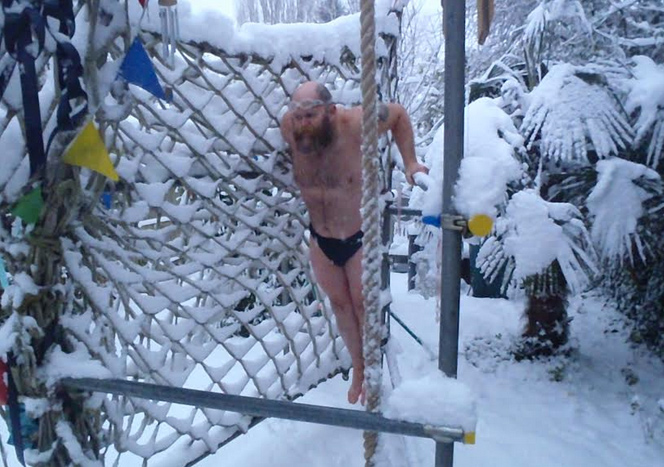
“It takes 4 weeks to get used to anything,” said Dino Antinori, who I used to run with in the early 1990’s. “It’s true for exercise, work, or even living with another person.” He was 20 years older than me. We ran together regularly and he was full of practical advice on fitness, strength and life in general. As I’ve worked through the last two decades, I’ve seen it proved many times. “The first week is hard, and the second week is harder. By the third week it starts to get easier and by week four you’ll wonder what all the fuss was about.”
The exact thing I was doing at the time that needed this four weeks of dedication was increasing my stamina to run a faster ten mile race. Dino had kindly taken me out for a “ten mile plus” run which ended up being fourteen with some very tough hills included. The following week he made it eighteen. I was very sore the following days, cycling to work and laboring on construction sites. As promised, week three was easier and by week four I was a different runner. Dino ran every day, mostly on his own whatever the weather. I aspired to be as dedicated, but it took a number of years.
Wrestler Arn Anderson was interviewed with Ric Flair about training in their day and he reminisced about daily wrestling and training – aches and pains were “like a callous on the hand,” he said. It all rang true with what Dino had said.
Getting fit or strong for the first time is tough. It’s a step into the unknown. Lots of aches and pains add to the doubts. The ambition seems too far away, and impatience is usual. The wish to be faster, fitter, stronger and better conditioned never goes away. Between achievement of the ambition and the now of identifying it exists a lot of work.
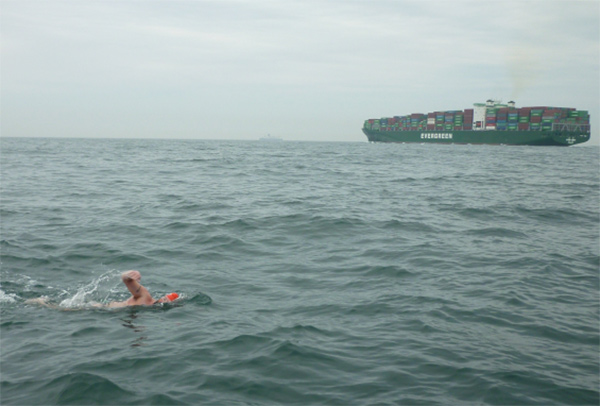
It was 2004. I had a leg injury and it was hurting me a lot. Relief came from swimming outdoors in the cold so I did more of it, associating relief with being cold. Consequently I became very good at swimming in cold conditions. On land, I sometimes had a limp. Physical work was not always enjoyable and on this particular day, the sun was beating down and my task was to break up a giant concrete slab with a sledgehammer. A pneumatic jack hammer would have been easier and quicker with less pain for my leg. However, the homeowner did not wish to inflict such noise on his neighbors and hired me to break it up. I was struggling financially so turned up with sledgehammer accordingly.
Every hit sent pain through my leg. It took three hits to make a crack in the concrete. Sweat poured into my eyes and I felt alternately grumpy and elated. Grumpy because I was hurting. Elated because I had not let it stop me. I daydreamed–the secret pleasure of every manual worker–and ran through scenarios. My friend John Rickhuss had died a short while before. He’d been training to swim the English Channel. Two years earlier, we’d both swam the length of Windermere, 10.5 miles. It had taken me seven hours and twenty nine minutes. I was glad to stop. John, much older than me and faster congratulated me at the finish: “That’s your six hour swim done, Dan,” he said cheerfully. “It’s the Channel next for you.” The thought of doubling that effort seemed impossible. For him though, it wasn’t. He built on that swim for the next few years gradually.
I went to Loch Ness and repeated the 10 miles more comfortably, swam Ullswater (7 miles) the following year and shortly after had some personal misfortune which meant at the time of hammering the slab I was living in a one room bedsit, struggling to pay the rent. John was gone, but his words lingered. Had he been humoring me? Or did he see something in me that I didn’t? I thought of Dino who had also made predictions that came true. I swung the hammer again and another jolt went up the leg. “Swimming the Channel can’t possibly be worse than this,” I said out loud to no-one in particular. The future me, the me of now smiles again remembering this and I return again to encourage the younger. “Stick at it. Things will improve. You’ll find a way to overcome the injury and bridge the gap between there and here.”
I finished the slab. Gradually I worked my way to better personal circumstances. Hard decisions had to be made and I took a lot of wrong turns, worked a lot of dead ends. I swam outdoors, trained in the woods with some pull ups, dips and lifted logs. I cycled, ran, rowed, paddled and swam, worked manual labor on farms and construction/maintenance and dreamed what it would be like to swim to France. I returned to the slab often. It became my symbol of overcoming difficulty.
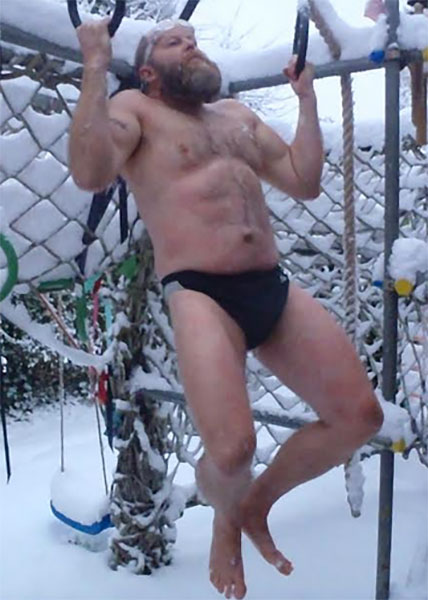
Eventually I did swim the Channel. Before I did it I wondered if I could. Now I wonder how I did. It never looks smaller or less of a challenge. During the swim I had plenty time to daydream, remember and plan. I remembered the slab a number of times, each time comparing the experience. “Is this harder than the slab?” “No.” Towards the end, when my head was hurting, my shoulder grinding and my stomach nauseous, I reflected with a smile that “at least it’s not as bad as breaking up that slab.” I returned to my younger self. “Keep it up, Dan, you’ll end up here, in the Channel–doing it.”
This winter has bought new challenges and opportunities along with fresh ambitions. On good days, I find I am pulling high in my pull-ups and the assisted pistols are improving. The injuries of the summer that seemed so serious are now memories. I smile and return to those days of doubt with a smile. In recent difficult days – well, I grind through the daily minimum and take extra warm up sets because I know that some enthusiasm will surely follow. Everything that has gone before has led me to here. “These struggles will soon be fond memories,” I hear a voice say, and I smile once more as I return to the slab and tell the sweating youth the good news.
***
Dan Earthquake is involved in event safety and hosts winter swimming training camps for Channel Swimmers. In 2013 the Channel Swimming Association awarded him the trophy for “Greatest Feat of Endurance” for his 21hr 25 minute crossing of the English Channel. In August 2018 Dan was part of the 4 person relay team that set a new record for the Enduroman Arch to Arc triathlon between London and Paris. For more info, visit http://www.danearthquake.com/
